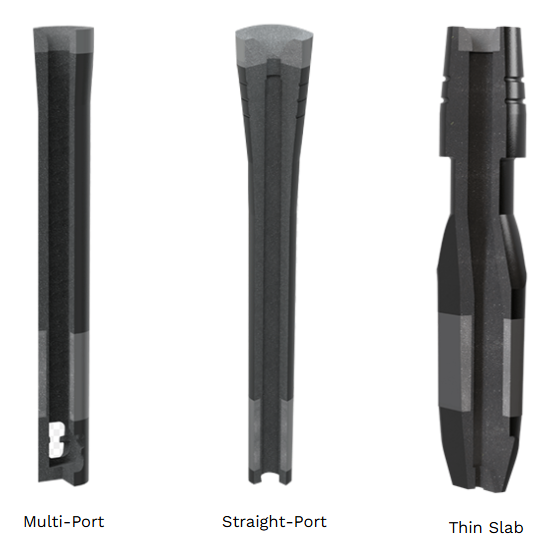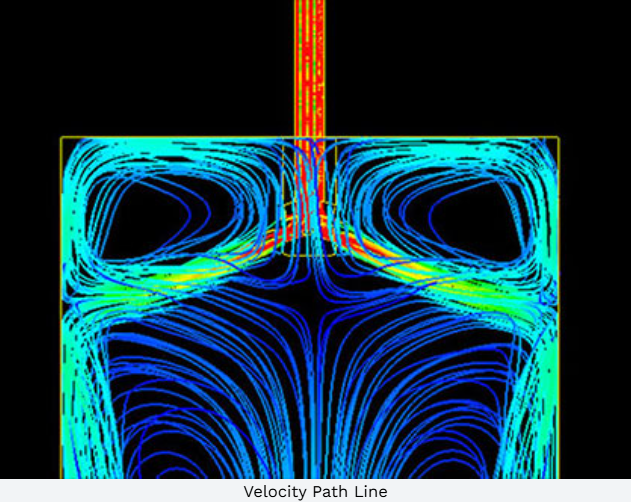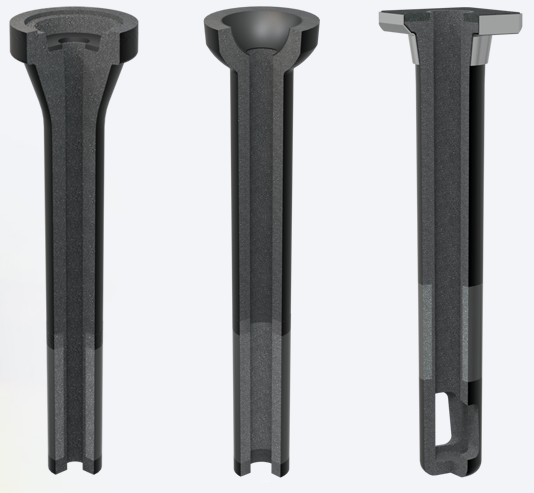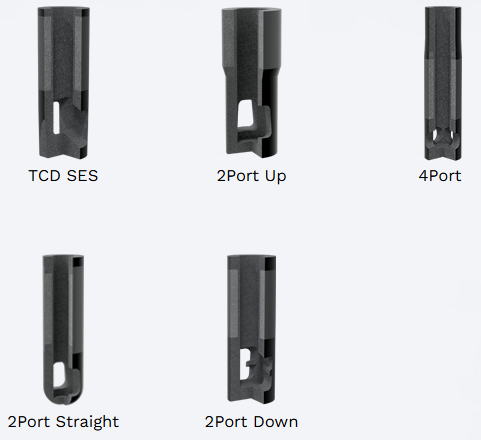Sub Entry Nozzle and Shroud
Sub Entry Nozzle / Shroud
Sub Entry Nozzle / Shroud (SEN / SES) is an isostatically pressed refractory tube used for flow of steel from Tundish to Mould.
The primary function of SEN / SES is to prevent re-oxidation of steel between the tundish and the mould. The design of the SEN / SES strongly influence the casting process by modulation of steel flow and thermal charasteristics inside the mould.
Longer casting duration is achieved with special Zirconia containing mixes for the slag zone. Different glaze compositions are available that cover all range preheating and casting conditions. Latest insulation materials like Bio Soluble Ceramic Fiber and Fibre free Insulating Coating for SEN and SES eliminate the risk of exposing our customers to hazardous traditional ceramic fiber.
Different design SEN & SES are available for conventional slab, thin slab, billet, bloom and beam blank casters. Customized SEN designs are offered through flow modelling simulations.
Design options
- Cold Start SES for emergency change
- Anti-clogging SEN/SES for Aluminium killed steel
- Multi – Port SEN for high throughput casting
- Reverse tapper SEN for Special Alloy steel casting
- Scan Head SEN for without Well Block fixing
- Semi Immersion Nozzle (SIN) for Beam Blank casting
- Tube Changer SES for high sequence Slab Caster casting
- Thin Slab SEN for high throughput casing
Flow Modelling Simulation based design
Steel flow characteristics from tundish to mould is critical to continuous casting process and influence finished steel quality. We offer customized SEN designs using the latest CFD flow modelling techniques that predicts best solution as per casting requirement.
Sub Entry Shroud
For high sequence casting tundishes using Tundish Nozzle or Tundish Slide Gate or Tube Changer systems, the SEN is substituted by replaceable Sub Entry Shroud (SES), that can be changed in hot condition during operation.
Port Design
SEN port design is an important factor that impacts the flow of molten steel inside the mould. Optimized port design help to achieve thermal homogeneity with minimum mould level fluctuation and reduce inclusions. The design of the port is customized through flow modelling simulations to suit casting requirements.









